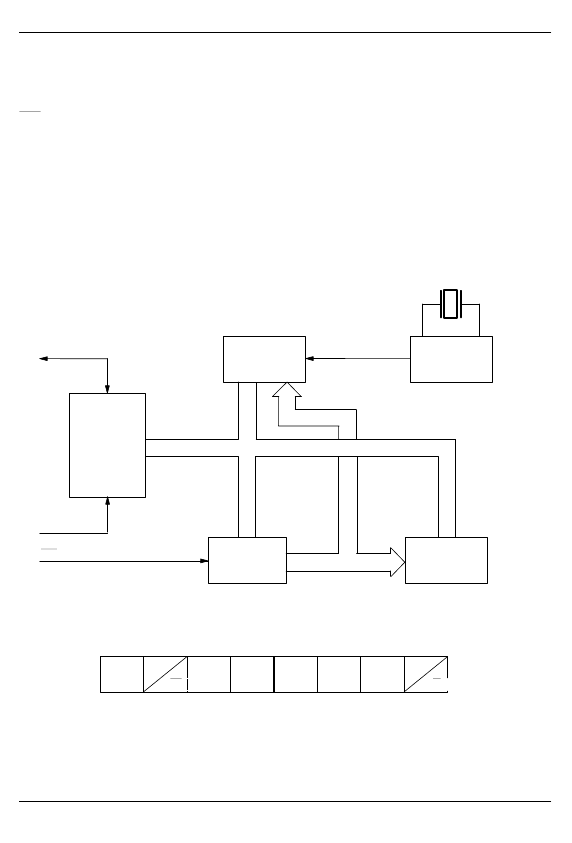- 您現(xiàn)在的位置:買賣IC網(wǎng) > PDF目錄376947 > DS1202S Serial Timekeeping Chip PDF資料下載
參數(shù)資料
| 型號: | DS1202S |
| 英文描述: | Serial Timekeeping Chip |
| 中文描述: | 串行時(shí)鐘芯片 |
| 文件頁數(shù): | 2/11頁 |
| 文件大小: | 100K |
| 代理商: | DS1202S |

DS1202, DS1202S
032697 2/11
OPERATION
The main elements of the Serial Timekeeper are shown
in Figure 1: shift register, control logic, oscillator, real
time clock, and RAM. To initiate any transfer of data,
RST is taken high and eight bits are loaded into the shift
register providing both address and command informa-
tion. Data is serially input on the rising edge of the SCLK.
The first eight bits specify which of 32 bytes will be ac-
cessed, whether a read or write cycle will take place,
and whether a byte or burst mode transfer is to occur.
After the first eight clock cycles have occurred which
load the command word into the shift register, additional
clocks will output data for a read or input data for a write.
The number of clock pulses equals eight plus eight for
byte mode or eight plus up to 192 for burst mode.
COMMAND BYTE
The command byte is shown in Figure 2. Each data
transfer is initiated by a command byte. The MSB (Bit 7)
must be a logic 1. If it is zero, further action will be termi-
nated. Bit 6 specifies clock/calendar data if logic 0 or
RAM data if logic 1. Bits one through five specify the
designated registers to be input or output, and the LSB
(Bit 0) specifies a write operation (input) if logic 0 or read
operation (output) if logic 1. The command byte is al-
ways input starting with the LSB (bit 0).
DS1202 BLOCK DIAGRAM
Figure 1
32.768 KHz
X2
X1
OSCILLATOR
REAL TIME
CLOCK
DATA BUS
IREGISTERS
COMMAND AND
CONTROL LOGIC
ADDRESS BUS
24 X 8 RAM
I/O
SCLK
RST
ADDRESS/COMMAND BYTE
Figure 2
1
7
6
A4
5
A3
4
A2
3
A1
2
A0
1
RD
0
W
RAM
CK
相關(guān)PDF資料 |
PDF描述 |
|---|---|
| DS1205S | MultiKey Chip |
| DS1205V | MultiKey |
| DS1208 | dallas semiconductor reliability report |
| DS1210 | Nonvolatile Controller Chip |
| DS1211 | Nonvolatile Controller x 8 Chip |
相關(guān)代理商/技術(shù)參數(shù) |
參數(shù)描述 |
|---|---|
| DS1202S8 | 制造商:Maxim Integrated Products 功能描述: |
| DS1202S-8 | 制造商:DALLAS 制造商全稱:Dallas Semiconductor 功能描述:Serial Timekeeping Chip |
| DS1202SN | 制造商:DALLAS 制造商全稱:Dallas Semiconductor 功能描述:Serial Timekeeping Chip |
| DS1202SN-8 | 制造商:DALLAS 制造商全稱:Dallas Semiconductor 功能描述:Serial Timekeeping Chip |
| DS1203-200 | 制造商:未知廠家 制造商全稱:未知廠家 功能描述:Communications Tuner Circuit |
發(fā)布緊急采購,3分鐘左右您將得到回復(fù)。